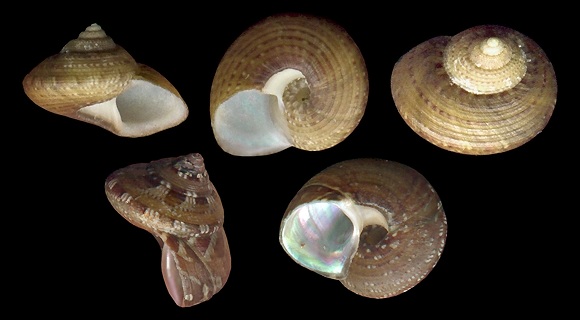
Grazer and deposit feeder in the upper infralittoral, often near or among shallow Posidonia oceanica meadows.
Original taxon: Trochus umbilicaris.
Synonyms: fuscatus, latior, mediterranea…
Top: Shallow water, Cassis, Provence, S. France. 11mm.
Bottom: Falasarna, Kissamos, W. Crete. 14mm.
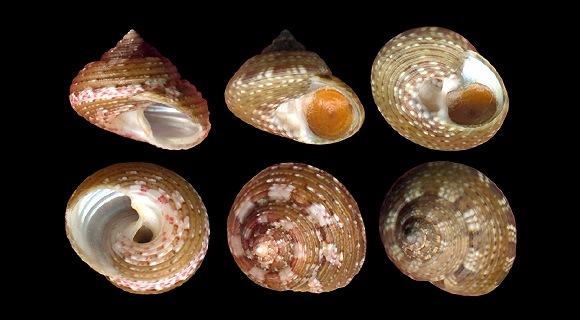
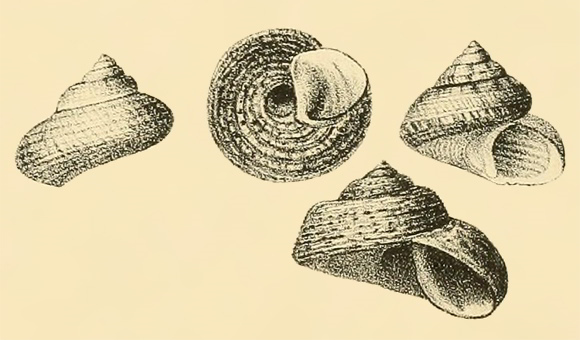
« Shell umbilicate, conical, cinereous, reddish, or purplish-brown, obscurely clouded, dotted or flamed with white; spire conical, acuminate; whorls about 7, slightly convex, spirally striate or lirate, microscopically obliquely striate; the lirae generally subobsolete on the last whorl; periphery obtusely angulate; aperture rather small, oblique, rounded-quadrate, angled at the base, smooth within; columella arcuate above, straightened below. » H. A. Pilsbry op. cit. p.211.
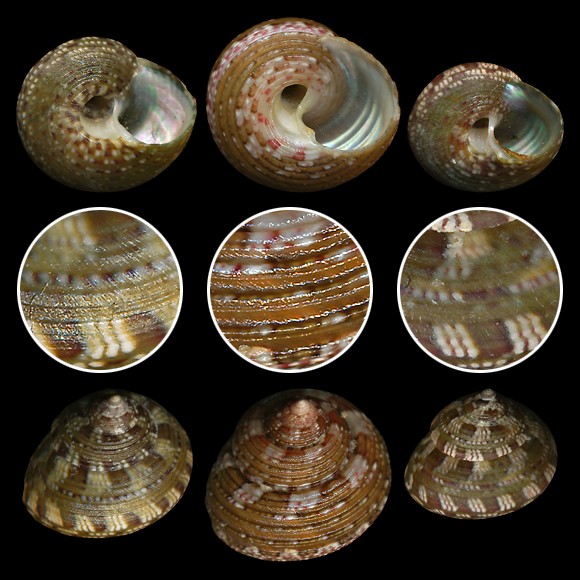
Pilsbry: « A species very closely related to G. ardens v. Salis. It differs in the smoother, more angulated body-whorl; the less canaliculate sutures; rounder mouth; deeper umbilicus, which, although as broad (or nearly so) as in G. ardens, is much less funnel-shaped, but nearly of the same width to a considerable depth; the whorl is also more angulated around the umbilicus than in the other species, and the columella is not dentate. The coloration is extremely variable, as in nearly all the Mediterranean Trochids. In fact nearly every species of the smaller Trochidae of this province exhibits the same patterns and modifications in coloration, commencing with (1) a series of white flames beneath the sutures, which (2) are continued as longitudinal, oblique, or undulating stripes to the base, or (3) are broken into maculations or articulations over the whole surface, or (4) the entire surface is either creamy white or uniform dark. »
Sculpture variation. These shells were collected in a very small area, at foot of a big rock, on the easternmost border of the isthmus, Elafonisi eastern reef. 10-14mm.
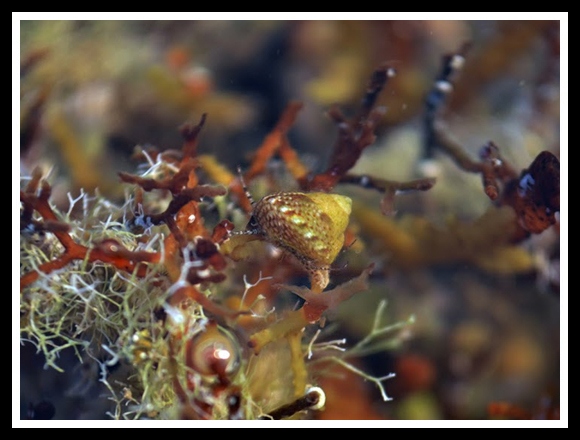
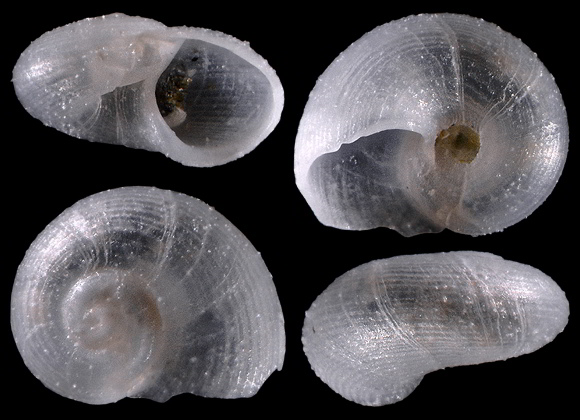
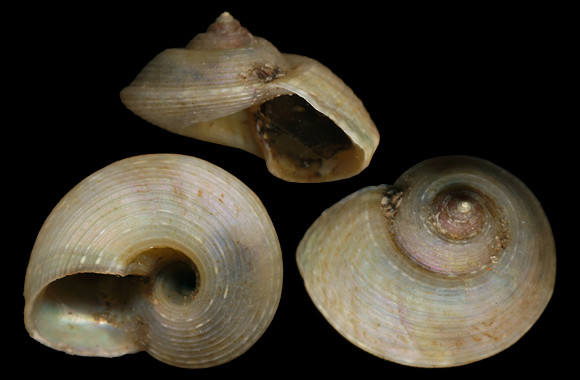
« Large species, characteristic of these regions. It differs from [umbilicaris] by its shape, size, sculpture, umbilicus, etc.[…] The color is olivaceous with large sutural blotches and white spots. In my “Nuova Revista” of 1875, I had distinguished it with the name of var. patula. This word can not be used as a specific name, because there is a T. patulus by Brocchi, sub-Apennine fossil. – Var. albina; completely milky-white. » – T. A. di Monterosato: “Notizie intorno ad alcune conchiglie delle coste d’Africa”, Bullettino della Società Malacologica Italiana vol. V, Pisa 1879, p.218-219.
Pilsbry: « Large, thin, much depressed, the sutures profound; body-whorl depressed, carinated, finely lirate; aperture large, oblique, expanded; umbilicus broad, funnel-shaped. ».
Pilsbry: « Large, thin, much depressed, the sutures profound; body-whorl depressed, carinated, finely lirate; aperture large, oblique, expanded; umbilicus broad, funnel-shaped. ».
1m deep, seaweeds, Sidi Yussef, Kerkennah, Tunisia. 12mm.
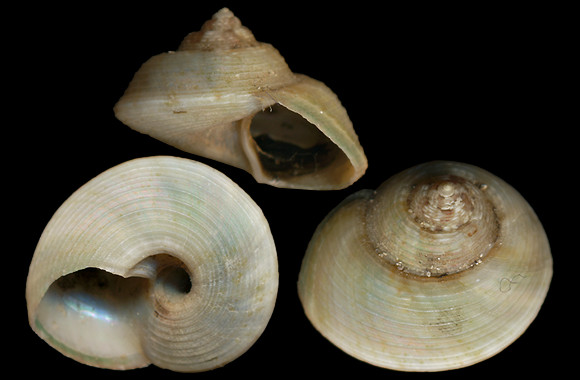
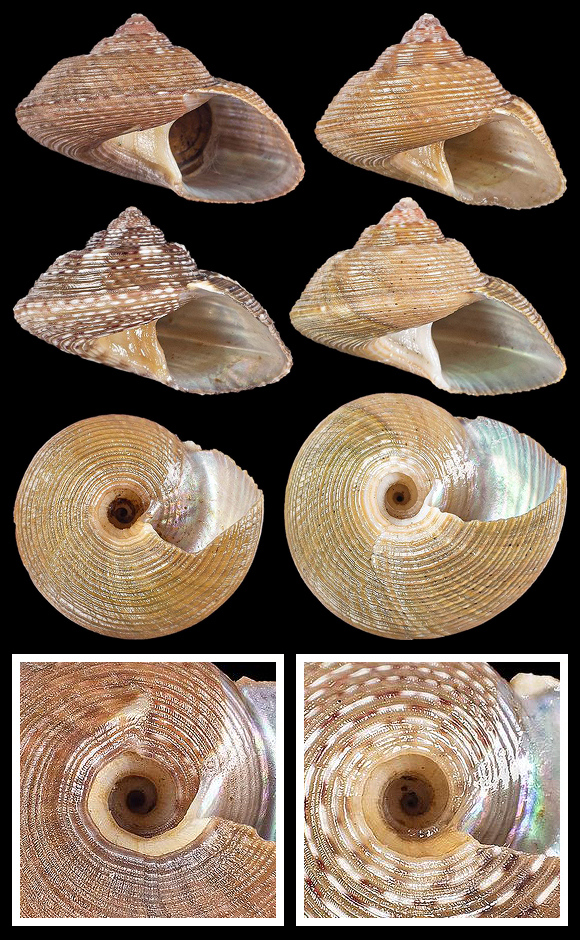
Original pictures provided by A. Nappo (IT).
– (CC BY-NC-SA) –